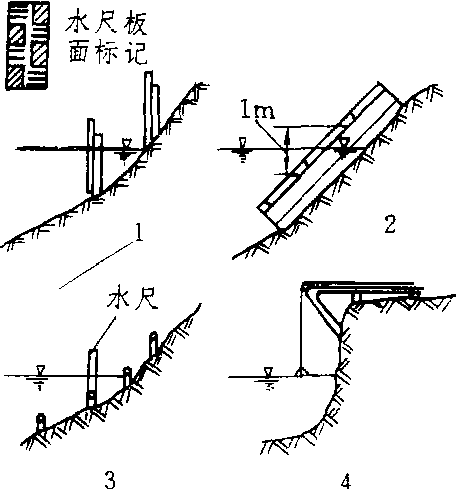水尺
测量江河、湖泊、水库等水面高程的一种装置。将尺寸刻画的搪瓷板或油漆木板,装钉在水体稳定的岸边桩架上或建筑物上。预先测出水尺零点高程,水面切在水尺上的位置是水位读数。将水位读数加上水尺零点高程,即为水体水面的高程。
水尺hydrometric gauge
用于测量江河、湖库和渠道水位的设备。最常见的为直立式水尺,还有倾斜式、矮桩式、混合式和悬垂式等类型。可根据河床的土质及稳定程度、断面形状及水流情况,从中选用一种或几种。

水尺
1.直立式 2. 倾斜式3. 矮桩式 4. 悬锤式
- Bangor
- Bangui
- Bangweulu,Lake
- Banja Luka
- Banjarmasin
- banjo
- Banjul
- Banka
- Bank for International Settlements
- Bankhead,Tallulah
- bank holidays
- banking
- Bank of England
- Bank of the United States,First
- Bank of the United States,Second
- bankruptcy
- banksia
- Banks Island
- Banks,Sir Joseph
- Banneker,Beniamin
- Bannister,Sir Roger Gilbert
- Bannock
- Bannockburn
- banshee
- bantam